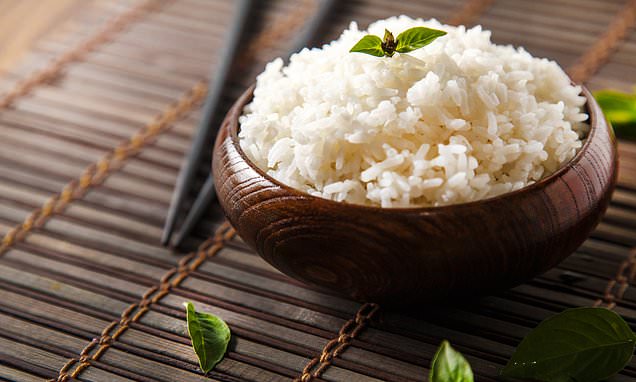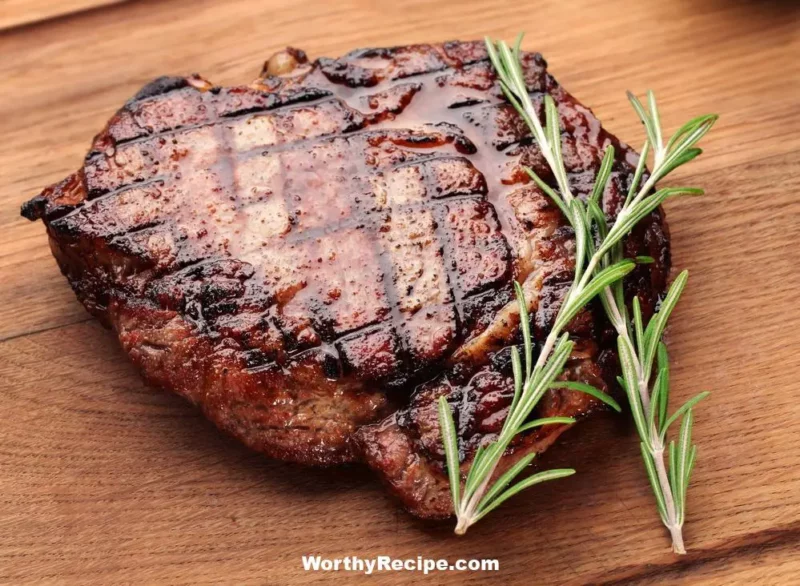Should You Thaw Frozen Pie Dough Before Baking?
Baking pies from scratch can be time-consuming and tough, especially if you’re not an experienced baker. The solution? Frozen pie dough! Not only is it readily available in most grocery stores, but it also saves you the hassle of mixing, kneading, and rolling out dough from scratch.
But many novice bakers are often unsure whether to thaw the crust or bake it frozen. So, should frozen pie dough be thawed before baking? Let’s explore this question and get all the answers you need to bake the perfect pie!
What is Frozen Pie Dough?
Frozen pie dough is pre-made pie crusts that have been made ahead of time, flattened into a disc shape, and then stored in the freezer until needed. These crusts are usually made from flour, shortening, and butter (or other kinds of fat), salt, and water.
Frozen pie dough has become quite popular among home bakers because they are quick to use and come in handy during busy times like holidays when there’s just too much cooking to be done. Plus, with frozen pie crusts available in different sizes – from 6-inch to 10-inch and even larger sizes – you can easily whip up your favorite pies in no time at all.
You may also find different types of frozen pie dough in the market these days. Some are sweetened with sugar while others don’t contain any sugar at all. Some have added flavors like cinnamon or vanilla while others are plain. Another interesting variety is the whole wheat pie dough which is a healthier option for those watching their diets.
The Thawing Process
Frozen pie crusts need to be thawed first before using them for baking your pies. This is because when the crust is frozen, the dough becomes hard and brittle, making it difficult to handle.
There are three methods of thawing frozen pie crust:
Room Temperature
The simplest method of thawing frozen pie dough is to let it sit at room temperature for about 15-20 minutes before using.
Take the crust out of the freezer and remove it from its packaging. Place it on a plate or baking sheet and leave it on your kitchen counter until it reaches room temperature. Once it has thawed completely, you can proceed with rolling it out and filling it with your favorite pie filling.
Refrigerator Method
If you have more time, you can also try thawing your pie crust in the refrigerator. This method takes longer but gives more consistent results than thawing at room temperature.
To thaw frozen pie dough using this method, take the crust out of its packaging and place it on a plate or baking sheet. Then put it in the refrigerator for at least 4-6 hours or overnight if possible. Make sure to cover the dough with plastic wrap or aluminum foil to prevent it from drying out or becoming contaminated by other food items in your fridge.
Microwave Method
If you’re short on time, you can also use a microwave to defrost your frozen pie crust quickly. But be careful not to overheat the dough as this can make it tough and chewy.
To defrost your frozen pie crust using a microwave, follow these steps:
- Remove the packaging from your pie crust and place it on a microwave-safe dish or plate.
- Microwave on high for 10-15 seconds.
- Turn the crust over and heat for another 10-15 seconds.
- Check to see if it has thawed completely. If not, microwave for a few more seconds until fully defrosted.
Advantages of Thawing Frozen Pie Dough
Improved dough quality and texture
Thawing your frozen pie dough can help improve the quality and texture of the crust. The dough will be softer and more pliable, making it easier to roll out and shape without cracking or breaking. A properly thawed dough will also produce a flakier and tastier pie crust when baked.
Easier to work with when it’s thawed
When your pie crust is thawed, it becomes easier to handle as compared to when it’s frozen. Rolling out the dough to an even thickness becomes much simpler, making it easier to achieve that perfect pastry shell you desire.
How thawing makes rolling out easier
Defrosted dough is much easier to work with when rolling out. Rolling pin glides smoother over the dough. Therefore the crust maintains its shape without breaking than when frozen.
Disadvantages of Thawing Frozen Pie Dough
Potential loss of flavor and quality if not thawed properly
If you do not thaw your pie crust correctly, it may lead to the development of ice crystals that can result in a soggy or tough crust after baking. This process can also absorb other tastes in your freezer so better store them properly at all times.
Hygiene risks if not thawed correctly
A defrosting frozen pie shell by leaving it at room temperature for too long can expose you to bacterial contamination. These organisms multiply rapidly in warm and moist environments. Also, surfaces that are not properly cleaned during the thaw process can become contaminated.
Possible increase in cooking time
Since a frozen pie crust cooks differently than a thawed one, your baking time may differ if you switch methods mid-prep.
Notable Reviews On Thawed Vs. Unthawed Dough
Experienced bakers have conducted personal baking accounts where they tasted and compared the texture and taste of both thawed and unthawed pie crusts.
Most agreed that the thawed dough is much easier to work with as it produced a flakier texture after baking. However, many noticed there wasn’t much difference in the flavors of baked pie crusts prepared from defrosted or frozen pastry shell.
Factors Influencing Your Decision To Thaw or Not
Time constraints: How much time do you have before baking?
If you’re in a hurry, it’s best to use the microwave method to defrost your frozen pie dough. But if you’re not pressed for time, using the refrigerator is preferred since it ensures even defrosting of the dough and lessens contamination risks.
Personal preference: Do you enjoy using thawed or unthawed dough for pies?
Taste being subjective, some prefer using unthawed pie shells as they apparently get crispier during baking while others opt for thawed crusts for their softer texture. It’s best to try both methods and come up with what best satisfies your taste buds.
Purpose: Are you using it for a no-bake pie or filled pie?
Thawed shells are suitable for filled pies while frozen shells can be usable for no-baked pies where it takes a longer time to firm up than filled ones.
FAQs And Answers For Bakers
Q: What are the effects of baking an unthawed crust?
Baking an unthawed frozen pie dough can lead to uneven cooking, the pastry shell may not cook all the way through, or it may become too crispy or overdone. The flavors could be otherwise the same with thawed ones but are more prone to creating air pockets underneath when they cook.
Q: Can you over-thaw a pie crust already out of its packaging?
Yes, you can. Over-thawing a crust will lead to excess moisture that can create an undercooked and soggy bottom. Also, when there’s too much fluid build-up, pockets form in the crust leading to your filling leaking out.
Tips On What To Do With Leftover Dough
Storing suggestions
- Wrap them well: Store leftover dough tightly covered in plastic wrap or an airtight container in the refrigerator for up to 2 days
- Freeze them: You can freeze leftover pie dough by rolling it into discs then wrapping them securely in plastic wrap before storing them in freezer bags. Frozen dough stays good for up to 2 months.
Pie idea suggestions:
- Galettes: You can make free-form tarts called galettes by lying rolled-out pie dough on a baking sheet and adding your favorite fillings on the top. Fold the edges over the fillings, some egg wash before baking for 30-40 minutes, and you’re good to go.
- Pie pops: Use leftover scraps to create bite-sized pie pops. Just cut circles from the dough, sandwich some fruit jam or preserves between two circles, insert lollipop sticks in them before baking for 10-15 mins
Conclusion
If you want your pies to come out perfectly flaky and tender, then thawing your frozen pie dough is the way to go. Thawing makes it easier for you to work with and produces a better crust texture than when unthawed ones create.
With our detailed guide on how to thaw frozen pie dough correctly and avoid common pitfalls, you can finally enjoy a bakery-quality pie at home
Remember always that regardless of whether you decide to defrost your crust or not, as long as you follow directions carefully and not rush through the process during the pre-baking stage, your end result will taste great.
1. Do you need to defrost frozen pie dough before baking it?
Defrosting frozen pie dough is highly recommended before baking it. This is because the dough will become easier to handle and roll out when it is thawed, ensuring that it doesn’t crack or break during the process.
2. How long should I thaw frozen pie dough before baking it?
Letting your frozen pie dough come to room temperature naturally can take several hours. However, if you’re in a hurry, you can speed up the process by placing it in the fridge for approximately two hours or until completely defrosted.
3. What happens if I bake my pie with frozen pie dough?
You’ll risk ruining the quality of your pie if you bake it with the frozen pie dough. The result may be uncooked or undercooked dough in some areas, and overdone in others as the butter in the mixture melts into baking juices too quickly.
4. Can I refreeze my thawed and unused pie dough?
It’s not advisable to refreeze your thawed and unused pie dough, as this can cause moisture build-up and ruin its overall texture and flavor upon baking. We recommend using all of your thawed pie crust once completely defrosted.





